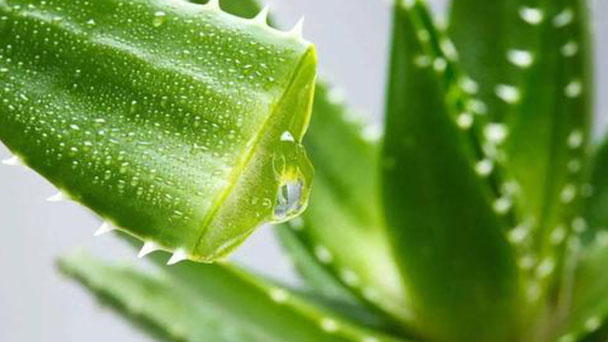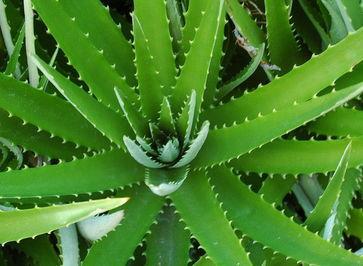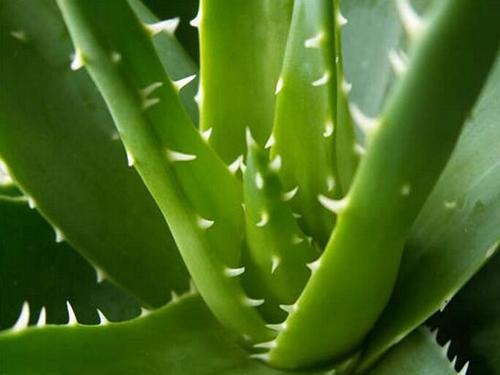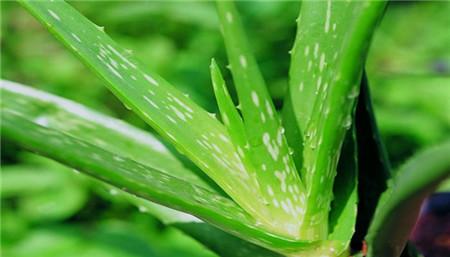Aloe care guide
Written by Maggie
Sep 09 2021

Aloe is a shade - loving plant and not resistant to strong light irradiation. A lot of people like to buy it and raise it at home, but what they want to know more about is how to care for it .Let's learn some lessons together!

Aloe - Most Common House Plant
How to care for Aloe leaf tip of yellowing and shrivelled
This is mainly because of poor conservation techniques. If Aloe is short of water, replenish water to keep the soil moist. If the soil permeability is poor, you need to replace the pot soil for the plant. If the light is too strong, move the plant to a cool, ventilated place. If the plant lacks nutrients, add fertilizer to the plant.
1. Hydrate for Aloe
Aloe is a common ornamental plant in families. The leaves of the plant are thick and juicy, making it highly ornamental. During curing, when water is insufficient, the tip of the plant will become yellow and shrivelled. If the plant is short of water, it is necessary to replenish water to the plant in time. The plant is not waterlogged and should be watered properly to keep the soil as moist as possible. During the winter, water should be controlled.
2. Replace the soil for Aloe
Aloe has the ability to store water. Plants are waterlogged and need to be grown with soil that is breathable and well drained. Aloe's leaf tips are yellowish and shrivelled, possibly because the soil is not breathable and the plant needs to be replaced. The soil can be loose, breathable and well-drained neutral soil. After disinfection, the plants can be transplanted into the basin soil.
3. Sunscreen for Aloe
Aloe likes light, tolerates half shade, not suitable for direct light. During the growth of the plant, the tip of the leaf is yellow and shrivelled, or it may be caused by too much light. If the light is too strong, the plant should be moved to a cool and ventilated environment for curing. The leaf tip with severe sunburn can be cut off. Apply an appropriate amount of healing agent on the wound site, and the plant will recover in the later stage.
4. Fertilize appropriately for Aloe
Aloe needs plenty of fertilizer to grow its leaves during its growth. When the plant does not have enough nutrients, the tips of its leaves will turn yellow and dry out. If the plant lacks nutrients, it is necessary to add nutrients to the plant. Compound fertilizers containing nitrogen, phosphorus and potassium can be applied to the plant, which can promote the growth of leaves and make the leaves of the plant more bright green.

Care for Aloe leaf softening
Aloe leaves that go soft can be caused by overwatering, too much light, soil deterioration, or temperature problems. Take action depending on the situation. Stop watering when you overwater; Provide adequate shade when the light is too strong; When the soil deteriorates, it is necessary to change soil in time for cultivation. If the temperature is not good, the temperature can be improved.
1. Watering for Aloe
Aloe, also known as shallots, is a member of the Afodidae family and is often grown in pots. So what happens when the leaves go soft? Aloe leaves that go soft are usually caused by overwatering. Stop watering and remove any excess water from the soil.
2. Light for Aloe
Aloe leaves that go soft can also be caused by too much light. Transplant the plant to a semi-dark, ventilated room and the plant will return to normal. Aloe likes light, but is afraid of too strong light. Keep the plants in plenty of light and keep them shaded to prevent sunburn.
3. Soil deterioration for Aloe
Aloe requires very strict soil requirements. It is best to replace the plant with soil every two years. If the soil is not replaced promptly, the Aloe leaves will become soft as the soil deteriorates. At this time, it is necessary to change the soil for breeding immediately. The replaced soil can be mixed with leaf rot soil, garden soil, river sand and perlite in a certain proportion.
4. Temperature for Aloe
Aloe does not tolerate cold and prefers to grow in a warm and humid environment. If the temperature is not good enough, the leaves will become soft. Measures should be taken according to the situation. If the temperature is too low, the plant should be transplanted to the temperature for growing. If the temperature is too high, do a good job of cooling down.

Latest Updated
- Benefits of Bugleweed - 7 Science-backed Health Benefits
- Bugleweed Dangers & Side Effects - Is It Poisonous?
- How to Plant Evergreen Trees - What You Should Know
- When to Plant Evergreens - Grow Guide for Evergreen Trees
- 12 Wonderful Evergreen Shrubs for Your Garden
- 12 Popular Evergreen Plants with Pictures for Beginners
- When And How To Prune A Lilac Bush Like a Pro
- How to Grow & Care for Lilac Vine (Hardenbergia Violacea)
- Japanese Lilac Tree (Syringa Reticulata) Care & Propagation Guide
- Shumard Oak Pros and Cons - What to Know
Popular Articles
- Winter maintenance of Antirrhinum Majus
- How to Grow Terminalia Mantaly Tree
- How to Grow and Care for Crossostephium Chinense
- How to grow Antirrhinum Majus in spring
- Peristeria Elata (Dove Orchid) Profile: Info & Care Guide
- Underwatered Snake Plant (Sansevieria Trifasciata) - Signs And How To Fix
- How to Care for Brazilian Jasmine Plant (Mandevilla Sanderi)
- How to Grow & Care for Graptopetalum Purple Delight in Summer
- Rosa Chinensis (China Rose): Plant Growing & Care Tips
- How to Care for Baby Sun Rose (Aptenia Cordifolia)